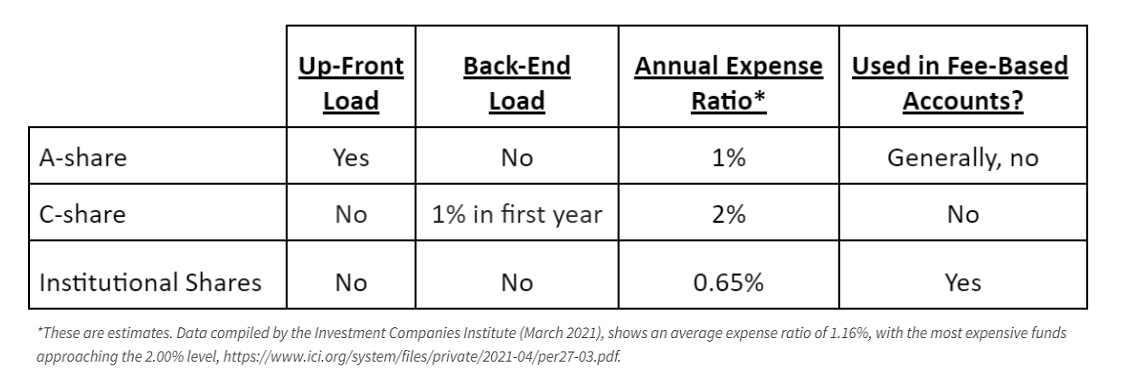Not As Simple As They Seem:
A Closer Look At Mutual Funds
On the surface, mutual funds might seem like a simple and effective way to invest. However, it is important to look beyond the creative marketing designed to catch your eye. Mutual funds demand the same rigorous analysis you would apply to any other investment.
That means understanding how mutual funds operate, the fees involved, and their inherent limitations. Only with this insight can you fully understand the efficacy of these funds as an investment solution.
Quite simply, the nature of these funds often makes them costly, tax-inefficient, and opaque. Mutual fund investors should beware of an increased risk of stock concentration and an overall lack of coordination amongst managers.
In this first edition of our two-part series, we will focus on the real costs of purchasing, owning, and transacting in mutual funds. Part two will discuss other constraints of mutual funds, including limited transparency, inefficient tax management, and the potential for unintended concentration.
The Costs Of Mutual Fund Investing
All mutual funds have a cost to the investor, even so-called “no-load” index funds. Virtually nothing in the world of investment management is free. After all, mutual fund managers are running for-profit businesses.
Understanding these costs is essential for every investor. However, mutual fund fees can be difficult to pin down, so it is important to understand the terminology.
Transaction Costs
Mutual funds may have a minor transaction cost to buy or sell shares as explained in the fund’s selling agreement with your custodian. This is not a sales commission (also known as a load) but simply a small toll for access that can range from $25.00 to $50.00 per transaction.
Loads And Operating Costs
Mutual funds can have a variety of share classes, each with different levels of cost. This can include a load assessed when either buying or selling shares, as well as ongoing operating costs that are presented as the expense ratio for the fund. The table below lays out examples of the fees you can expect to pay for each class of shares.

Depending on the arrangement with your financial advisor, the up-front load of an A-share may be waived in accounts where an advisory fee for asset management is applied.
Let’s look at the fees charged for each share class more closely.
A-Shares
A-shares require investors to pay an upfront commission or load as a percentage of the transaction value. Although this percentage varies, it can run as high as 5.75%. In a $100,000 A-share purchase transaction with a load of 5.75%, you would end up with shares valued at $94,250, with the other $5,750 used to pay the commission. However, there is no load on any dividends or capital gains distributions which are automatically reinvested in your account. Lastly, there are no back-end fees involved when you sell your shares.
There are, however, ongoing operating charges on A-shares, known as the expense ratio, that average about 1% of assets per year. For example, a $200,000 investment could cost roughly $2,000 per year in a static growth environment. Investors only receive details regarding this underlying expense in the mutual fund’s prospectus. Meanwhile, the associated fees are deducted by the fund from daily performance. Expense ratios are assessed in addition to the load discussed above.
C-Shares
Unlike A-shares, C-shares involve no loads or commissions when buying and only assess a back-end load when the fund is sold within the first year. However, investors must pay an even higher ongoing expense ratio based on the value of these shares, ranging as high as 2% per year. For example, if your account balance averaged $200,000 for the year, the fund’s expense ratio could cost as much as $4,000 per year.
Institutional Shares
Institutional shares are generally the class of shares with the lowest fees. They have no upfront loads, commissions, or back-end charges, and the expense ratios average about 0.65% per year, roughly half that of the other classes of shares. However, these shares are generally utilized in fee-based accounts that are subject to an advisory fee. A non-fee-based account may require institutional shares to have a higher minimum investment than an account charging an advisory fee.
Part two of this series explains the limited transparency of mutual funds into the specific holdings, the difficulties in managing one’s tax exposure, and the potential for unintended concentration in individual stocks.
If you have any questions about mutual funds, please contact a Blue Chip Partners financial advisor for guidance. We are here to help.
Expressions of opinion are as of this date and are subject to change without notice. The information provided does not constitute tax, legal, accounting, or other professional advice and is without warranty as to the accuracy or completeness of the information. Any information provided is not a complete summary or statement of all available data necessary for making an investment decision and does not constitute a recommendation to buy, hold or sell any security. The information has been obtained from sources considered to be reliable, but we do not guarantee that the foregoing material is accurate or complete. There are limitations associated with the use of any method of securities analysis. Indices are included for informational purposes only; investors cannot invest directly in any index. Every investor’s situation is unique, and you should consider your investment goals, risk tolerance and time horizon before making any investment. Prior to making an investment decision, please consult with your financial advisor about your individual situation. Past performance does not guarantee future results. Investing involves risk and you may incur a profit or loss regardless of strategy selected. There is no guarantee that any statements, opinions or forecasts provided herein will prove to be correct.